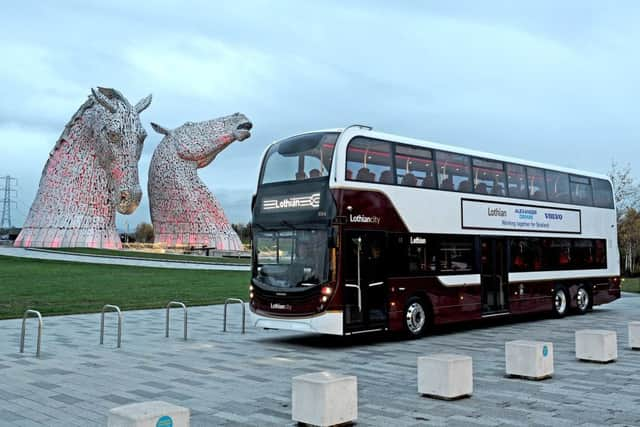Alastair Dalton: What Edinburgh's new 100-seat monster buses say about public transport
There had been little clue in the invitation of what was in store – simply that a new bus had been built for Lothian which would give “significant benefits” to passengers.
Heralded by a bagpiper, what emerged from behind a curtain at the Alexander Dennis factory in Falkirk turned out to be not only Lothian’s biggest ever but the largest in the UK.
Advertisement
Hide AdAdvertisement
Hide AdConfounding past gloom in the industry caused by the vicious circle of falling passenger numbers and growing urban congestion, this 42-strong fleet of 100-seater double deckers seemed like a massive vote of confidence in the future of the bus.


It could be a win for Scottish manufacturing too, since the Falkirk firm hasn’t made buses in volume for Lothian for decades.
Since the announcement last week, the operator has been surprisingly reticent about the new vehicles, which are due to debut in late January.
However, it seems a key motivator has been the ability to better cope with rush-hour demand without having to put more vehicles on the road which would just add to the traffic.
On the face of it, you might think such monsters would mean even more empty seats at quieter times, but what Lothian appears to be banking on is introducing a further improvement in passenger comfort to entice more people out of their cars.
Features already on its other buses like wifi and charging sockets will be accompanied by “mood lighting” to create a better ambience and high-back seats to give passengers more personal space.
However, the new buses are not electric, in a reflection that the industry has some way to go towards zero-emission vehicles.
Lothian is about to be joined by west coast counterparts First Glasgow in trialling electric buses, but I’m told they are still too expensive and can’t travel far enough between charges to yet be uniformly viable.
Advertisement
Hide AdAdvertisement
Hide AdScotland’s first emission zone comes into force in Glasgow city centre in less than seven weeks’ time on New Year’s Day, with Edinburgh, Aberdeen and Dundee to follow within four years. Buses will be the initial target of the pollution crackdown, with an increasing proportion having to have the cleanest diesel engines to use the zone.
For First Glasgow, clean diesel, rather than electric, is the “only show in town” when electrics can only manage 100 miles before having being charged for four hours, when a typical route involves 160 miles a day.
It said electric buses were three times the price of diesel ones, at about £450,000 each, and you would never recoup the difference in lower running costs.
But the worry must be that while the technology is evolving, there could be repeats of the situation in Glasgow, where its only electric service was threatened with closure because the cost of supporting it become prohibitive for the city council after the four-year-old vehicles’ warranty ran out.
Electric buses are smoother and will cut pollution where it matters, such as around passengers waiting at bus stops.
But there are likely to be a number of jolts to come on the road to buses becoming greener as well as more attractive to passengers.
